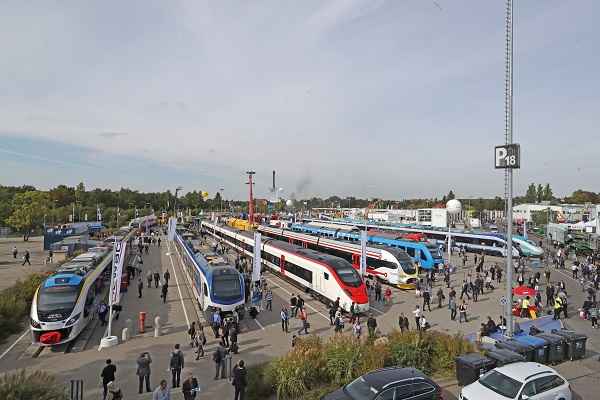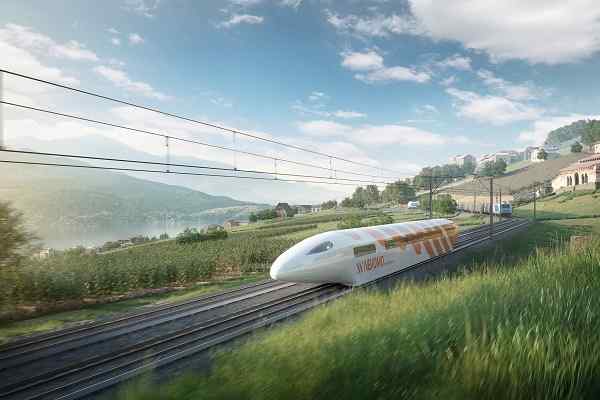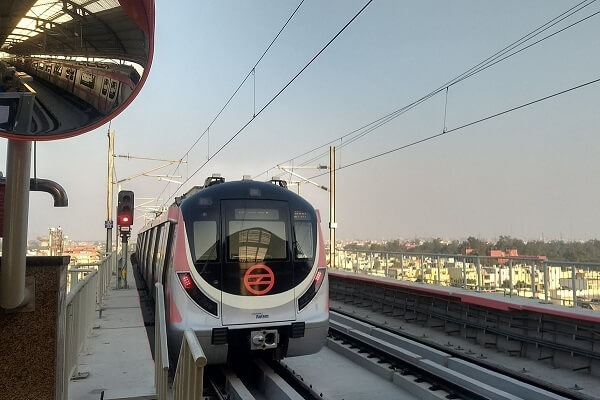 IndiGo to launch Urban Electric Air Taxis between Delhi to Gurugram
IndiGo to launch Urban Electric Air Taxis between Delhi to Gurugram Swisspod secures Strategic Investment to advance the Hyperloop Transportation
Swisspod secures Strategic Investment to advance the Hyperloop Transportation Siemens Mobility revolutionizes Copenhagen's S-bane Network with Driverless Technology
Siemens Mobility revolutionizes Copenhagen's S-bane Network with Driverless Technology Unlocking prosperity between India and Myanmar: The Kaladan Multi-Modal Transit Project
Unlocking prosperity between India and Myanmar: The Kaladan Multi-Modal Transit Project Is the RRTS Truly Accessible to the Common Man or Only the Privileged?
Is the RRTS Truly Accessible to the Common Man or Only the Privileged? Alstom sold its Rail Signalling Technology Business to Knorr-Bremse for €630 million
Alstom sold its Rail Signalling Technology Business to Knorr-Bremse for €630 million Vensa Infrastructure wins ₹412.58 crore civil contract for Hisar Airport
Vensa Infrastructure wins ₹412.58 crore civil contract for Hisar Airport Kuala Lumpur-Singapore high-speed rail project cost could be slashed to RM70 Billion
Kuala Lumpur-Singapore high-speed rail project cost could be slashed to RM70 Billion Nevomo's MagRail Technology Selected for Hyperloop Freight Demonstrator
Nevomo's MagRail Technology Selected for Hyperloop Freight Demonstrator Russia signs deal to procure bullet trains for Moscow - St. Petersburg high-speed line
Russia signs deal to procure bullet trains for Moscow - St. Petersburg high-speed line
DDA fails to implement pedestrian-friendly makeover plan in Delhi

New Delhi, India (Urban Transport News): Two years ago the Delhi Development Authority (DDA) had notified the regulations for a pedestrian-friendly makeover of Delhi streets, the policy continues to remain on paper with the land-owning agency yet to even constitute a high-level committee under the chairmanship of Delhi lieutenant governor (LG) Anil Baijal to oversee its implementation.
Despite starting work on the ground, the officials attributed the delay to the pandemic and subsequent lockdowns and restrictions, and said that they have already prepared walk plans in six key stretches.
In August 2, 2019, DDA had issued a policy for Enhancing Walkability in Delhi that aimed at making city roads accessible to all, especially areas around mass transit systems and residential neighbourhoods, and even proposed to allow citizens to rate the pedestrian facilities using a mobile application.
According to the policy, the DDA is supposed to prepare walk plans for 27 locations, mainly around Metro stations. The walk plans are basically area specific solutions to make road infrastructure, especially around Metro stations, markets and areas with high pedestrian and non-motorised transport volume, pedestrian-friendly.
“The committee is yet to be formed. But we are preparing the walk plans for 15 locations of which six are ready. These were approved by the Unified Traffic and Transportation Infrastructure (Planning and Engineering) Centre (UTTIPEC) in December last year. Now we are preparing detailed drawings of the six walk plans for implementing agencies," said DDA officials.
The six plans have been prepared for INA Market/Metro Station, Hauz Khas–IIT Delhi, Delhi University’s North and South campuses, Kamla Nagar and Lajpat Nagar.
“The process got delayed due to Covid pandemic. For the preparation of the walk plans, we had to carry out surveys to get information about the traffic volume, identify key problem areas related to pedestrian accessibility to the Metro stations etc. But due to lockdown, followed by the restrictions and then the second wave of the pandemic, we couldn’t do the survey. The Metro services were restricted for five months initially and then were operating on reduced capacity,” officials added.
Transport planning and road safety experts feel that a pedestrian-friendly infrastructure in residential colonies, markets, Metro stations and bus stands will reduce the load on public transport.







